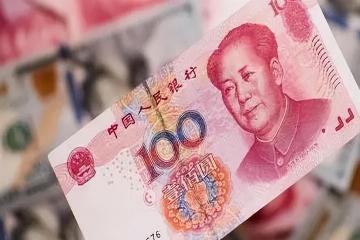Room for Decline in China's Bond Yields
Advertisements
In 2023, economic recovery in China has notably outperformed the situation in 2022, marking a shift for the country's financial landscapeThe anticipated adjustments in central bank policy rates seem unlikely, which consequently forecasts a decline in the 10-year government bond yield to around 2.60%. This movement is critical as it reflects broader trends in both the economy and the bond market amid fluctuating conditions.
Since mid-April, the Chinese bond market has entered a bullish phase, with the yield on 10-year government bonds decreasing from 2.84% on April 17 to a low of 2.69% by May 11—marking a trough not seen since November 10, 2022. However, the market has subsequently entered a period of volatile adjustment, oscillating between yields of 2.69% to 2.72%. Such fluctuations may be indicative of underlying economic conditions, investor sentiment, and reactions to broader global financial trends.
Looking forward, the economic recovery in 2023 alleviates concerns regarding potential rises in policy rates set by the central bank
Advertisements
Despite the optimistic recovery narrative, analysts believe it is difficult for the 10-year yields to decline below the previous cycle lows established back in 2020 at 2.48%. Recent expectations denote an average yield nearer to 2.60% as a more probable outcome.
Several factors contribute to the current bullish sentiment in the bond marketFirst and foremost, marginal economic momentum witnessed a slowdown in AprilData released by the National Bureau of Statistics reflects that indicators such as the Purchasing Managers' Index (PMI), as well as figures relating to consumption, investment, and industrial production, registered disappointments that fell short of expectationsParticularly, cumulative real estate investment from January to April saw a sharp decline, with numbers sinking 6.2% year-on-yearReal estate sales metrics also revealed a slowdown, highlighting a lack of robust demand, which is echoing sentiments akin to those observed back in November 2022.
In parallel, banks across China have lowered deposit rates, influencing the lending landscape significantly
Advertisements
Since April, a number of smaller banks and joint-stock institutions followed suit after large state-owned banks first adjusted the rates downward in September 2022. By May 5, several banks, including Bohai Bank and Zhejiang Commercial Bank, had reduced their interest rates on various deposit tenures between 4 to 30 basis pointsThis conditional shift emphasizes a downward trend, specifically noting that the rates for 3 to 5 year term deposits have fallen below 3%. This drastic reduction in borrowing costs inherently pushes banks to seek higher returns elsewhere, thereby driving the demand for bonds.
Moreover, the liquidity in the financial market has increased, establishing a conducive environment for leveraging strategies in debt investmentThe average 7-day repurchase agreement (R007) rate witnessed significant declines, moving from an average of 2.30% in April to 1.97% by May 26. This easing of monetary conditions continues to foster healthy investment appetite among non-banking financial institutions
Advertisements
Notably, the daily trading volume of pledged repos has frequently exceeded 7 trillion yuan since mid-April, reaching a record high of 8.2 trillion yuan on May 24. This strengthened leveraged trading indicates a robust demand fueling the bond market's bullish trend.
A historical analysis sheds light on the cyclical patterns of bond yields, suggesting that the current yield of 2.72% as of May 26 resides at a comparatively low 4.3% percentile historically since 2002. The yield curve has demonstrated three significant downward cycles following the pandemic onset in 2020. The current downward movement initiated in late February 2023 gained momentum through April and is framed as a noteworthy downward cycle, reflecting the experiences from previous drops.
The first major trough occurred on April 8, 2020, when yields dipped to 2.48%, primarily driven by exceptionally accommodative monetary policies enacted by the central bank during the initial pandemic wave
- The Perils of Pump and Dump Manipulation
- Fed's Tight Grip on Inflation Amid Trade Slowdown
- Economic Data Weighs on U.S. Treasury Yields
- BTL: The Largest Money Market ETF
- GDX: A Prominent Precious Metals ETF
This included unexpected reductions in reverse repurchase rates and the required reserve rateThe subsequent drop on August 18, 2022, to a low of 2.58% was largely the result of an aggressive policy pivot by the central bank amid mounting pessimism surrounding economic recovery due to ongoing pandemic impacts.
Both previous cycles emphasize the relationship between aggressive monetary easing and strong demand in the interbank liquidity market, underscoring the vital need for financial institutions to rebalance their portfolios in favor of fixed-income instrumentsThe DR007 benchmarks on the days corresponding to these low points were at 1.28% and 1.42%, indicating excess liquidity in the financial system at those intervals.
As we move forward in the bond market, the immediate outlook suggests a phase of continued fluctuation for long-dated bonds, while shorter-duration securities may attract higher interest

Given the backdrop of declining yields, investment behavior is becoming more cautious, prompting financial institutions to pivot toward shorter maturities in their debt portfoliosThe shifts in strategy will likely contribute to wider disparities in performance across different bond tenures.
Forecasts indicate a continuation of the downward trend for the 10-year yields, approaching the 2.60% mark—a level that, while indicative of a weak economic backdrop, simultaneously underscores the repercussions of lowered bank deposit rates and expansive liquidity conditionsAlthough benchmark rates such as MLF and LPR remain unchanged, potential market rate adjustments based on current bond yield positioning may initiate another wave of deposit rate cuts, thereby establishing new lows for interest rates in 2023.
Lastly, market participants should remain vigilant regarding any proactive credit policies aimed at enhancing market expectations